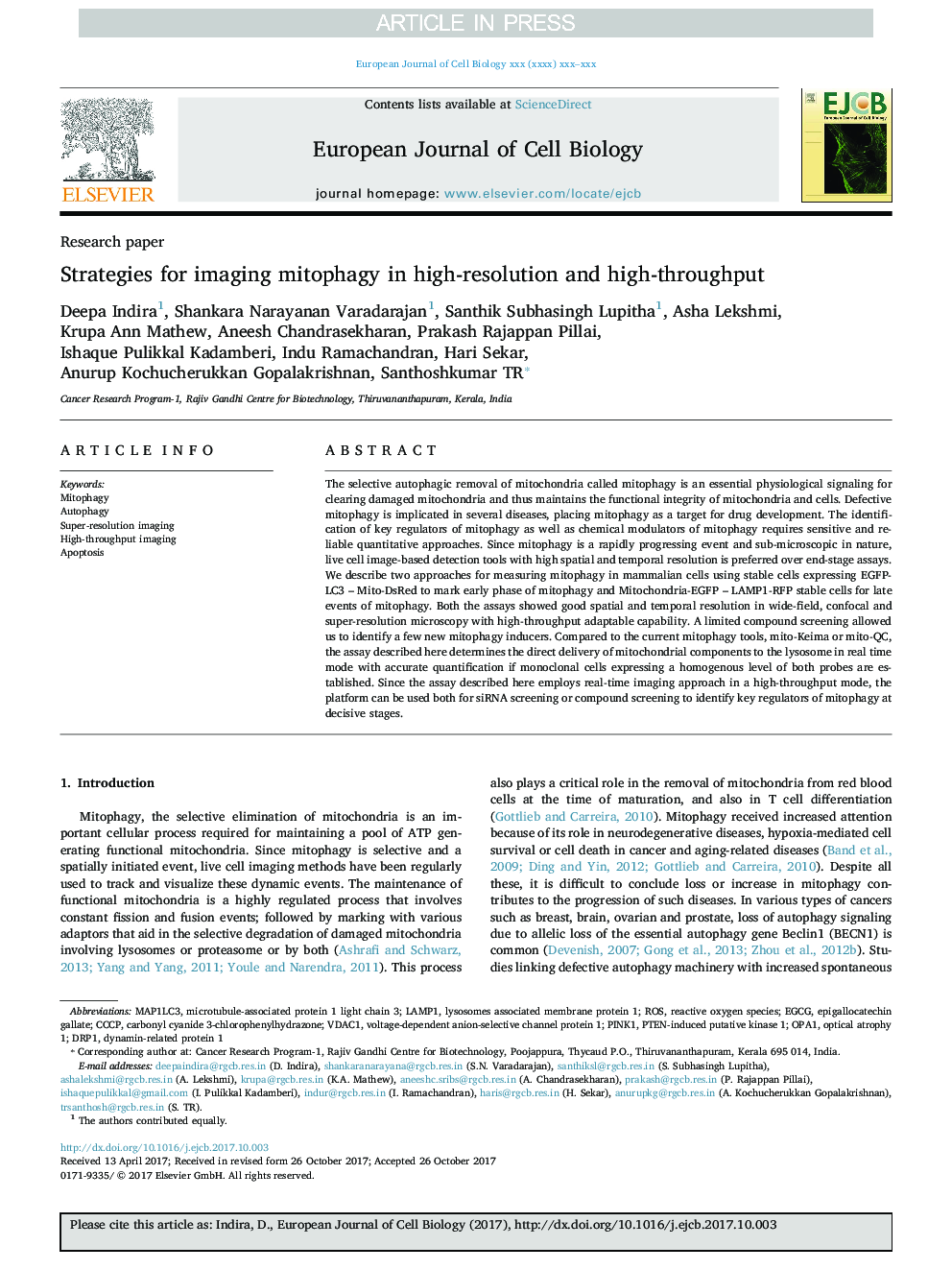| Article ID | Journal | Published Year | Pages | File Type |
|---|---|---|---|---|
| 8469697 | European Journal of Cell Biology | 2018 | 14 Pages |
Abstract
The selective autophagic removal of mitochondria called mitophagy is an essential physiological signaling for clearing damaged mitochondria and thus maintains the functional integrity of mitochondria and cells. Defective mitophagy is implicated in several diseases, placing mitophagy as a target for drug development. The identification of key regulators of mitophagy as well as chemical modulators of mitophagy requires sensitive and reliable quantitative approaches. Since mitophagy is a rapidly progressing event and sub-microscopic in nature, live cell image-based detection tools with high spatial and temporal resolution is preferred over end-stage assays. We describe two approaches for measuring mitophagy in mammalian cells using stable cells expressing EGFP-LC3 - Mito-DsRed to mark early phase of mitophagy and Mitochondria-EGFP - LAMP1-RFP stable cells for late events of mitophagy. Both the assays showed good spatial and temporal resolution in wide-field, confocal and super-resolution microscopy with high-throughput adaptable capability. A limited compound screening allowed us to identify a few new mitophagy inducers. Compared to the current mitophagy tools, mito-Keima or mito-QC, the assay described here determines the direct delivery of mitochondrial components to the lysosome in real time mode with accurate quantification if monoclonal cells expressing a homogenous level of both probes are established. Since the assay described here employs real-time imaging approach in a high-throughput mode, the platform can be used both for siRNA screening or compound screening to identify key regulators of mitophagy at decisive stages.
Keywords
VDAC1LAMP1EGCGPINK1MAP1LC3CCCPDrp1opa1PTEN-induced putative kinase 1ROSAutophagyepigallocatechin gallateHigh-throughput imagingSuper-resolution imagingApoptosisMitophagydynamin-related protein 1microtubule-associated protein 1 light chain 3Carbonyl cyanide 3-chlorophenylhydrazoneReactive oxygen species
Related Topics
Life Sciences
Agricultural and Biological Sciences
Plant Science
Authors
Deepa Indira, Shankara Narayanan Varadarajan, Santhik Subhasingh Lupitha, Asha Lekshmi, Krupa Ann Mathew, Aneesh Chandrasekharan, Prakash Rajappan Pillai, Ishaque Pulikkal Kadamberi, Indu Ramachandran, Hari Sekar, Anurup Kochucherukkan Gopalakrishnan,
